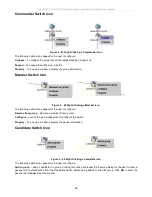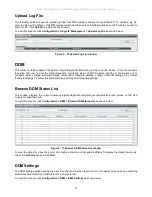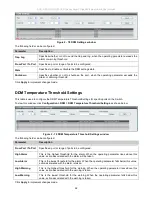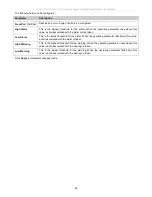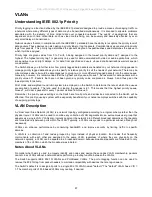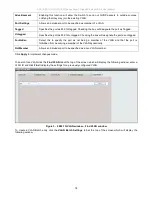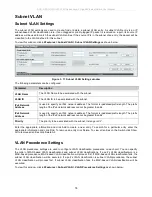
DGS-3700-12/DGS-3700-12G Series Layer 2 Gigabit Ethernet Switch User Manual
72
VLAN and Trunk Groups
The members of a trunk group have the same VLAN setting. Any VLAN setting on the members of a trunk group will
apply to the other member ports.
NOTE:
In order to use VLAN segmentation in conjunction with port trunk groups, you can first
set the port trunk group(s), and then you may configure VLAN settings. If you wish to change
the port trunk grouping with VLANs already in place, you will not need to reconfigure the VLAN
settings after changing the port trunk group settings. VLAN settings will automatically change in
conjunction with the change of the port trunk group settings.
Double VLANs
Double or Q-in-Q VLANs allow network providers to expand their VLAN configurations to place customer VLANs
within a larger inclusive VLAN, which adds a new layer to the VLAN configuration. This basically lets large ISP's
create L2 Virtual Private Networks and also create transparent LANs for their customers, which will connect two or
more customer LAN points without over-complicating configurations on the client's side. Not only will over-
complication be avoided, but also now the administrator has over 4000 VLANs in which over 4000 VLANs can be
placed, therefore greatly expanding the VLAN network and enabling greater support of customers utilizing multiple
VLANs on the network.
Double VLANs are basically VLAN tags placed within existing IEEE 802.1Q VLANs which we will call SPVIDs (Service
Provider VLAN IDs). These VLANs are marked by a TPID (Tagged Protocol ID), configured in hex form to be
encapsulated within the VLAN tag of the packet. This identifies the packet as double-tagged and segregates it from
other VLANs on the network, therefore creating a hierarchy of VLANs within a single packet.
Here is an example Double VLAN tagged packet.
Destination
Address
Source
Address
SPVLAN (TPID +
Service Provider
VLAN Tag)
802.1Q CEVLAN Tag
(TPID + Customer VLAN
Tag)
Ether
Type
Payload
Consider the example below:

